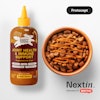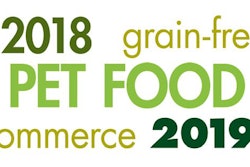
E-commerce presents a strong, yet underutilized, opportunity for pet food companies in Colombia, Mexico and other parts of Latin America, said Diana Mercado, founder of Zoo Inc. during her presentation at Foro Andino 2018 in Bogota, Colombia, which her company sponsors.
Globally, consumers increasingly do their shopping online, and Latin Americans are no exception, she said. E-commerce has opened up large areas of the world that formerly had few options. For example, Amazon delivery now reaches rural areas of Mexico, where consumers formerly had few pet food options.
In Colombia, pet food e-commerce grew by approximately 25 percent in 2018 over 2017 sales value, said Juan Pablo Garcia, category manager for Nestle Purina Petcare – Colombia, during his presentation at Foro Andino. Colombian pet food internet sales reached COP3.3 billion (US$1.05 million) in 2018.
While it may seem that some of the trend toward pet food e-commerce does not hold for the Mexican pet food industry, this may be mostly because pet food companies are not fully taking advantage of the opportunities, she said.
Major pet food brands online sales in Latin America
Few pet food brands in Latin America currently use direct online retailing of their dog and cat foods, she said. For example, the big three, Mars Petcare, Purina and Malta Cleyton, do not have methods for consumers to purchase directly online.
That does not mean those companies are completely unavailable online, though. Mars has online retailers, including Petsy.mx, Walmart and Amazon, while Purina is available from Soriana.com and Superama.
Malta Cleyton uses a technique in online retailing that makes distributors happy, Mercado said. The company’s website features an interactive map for consumers to locate the nearest place to buy Malta Cleyton pet foods.
Offering a map online is inexpensive, said Mercado, but it can deliver big results. What’s more, distributors like it because it drives consumer traffic to their brick-and-mortar locations.
E-commerce retailer growing in Mexico
Major brands may not be selling directly online, but one e-commerce retailer, Don Kroketón, has grown dramatically in the Mexican pet food delivery sector, she said.
Don Kroketón offers home delivery of a variety of brands. Those brands are sold according to various categories in drop-down menus. For example, the “commercial foods” tab includes brands such as Kirkland, while the “superpremium” list includes brands like Eukaneuba, Diamond, Royal Canin and Hill’s. Other categories on the website sell pet foods geared towards fast growing trends, such as grain-free and raw.
For now, Don Kroketón largely stands alone in the pet specialty focused e-commerce and home delivery sector, she said, but the opportunity is there for pet food companies to move towards similar retail models in Latin America.
Trends pushing pet food e-commerce in Latin America
Demographic, economic and technological changes in Latin America may favor the growth of pet food e-commerce in Latin America.
For one thing, unlike U.S. or European markets, the number of dogs and cats kept as pets is still growing in many Latin American countries, said Garcia. As people start thinking of dogs and cats as family, instead of burglar alarms and mouse catchers, the market for premium and superpremium pet foods will grow along with the pet population.
As in other Latin American nations, a growing pet population along with urbanization is creating a greater density of companion animals in Colombian towns and cities, Garcia said. These urban regions also have the greatest access to e-commerce.
An estimated five million dogs live in Colombia, and that population is growing, said Garcia. Between 2011 and 2017 the population grew 11 percent. As people move into cities, they are keeping smaller dogs. Seventy-seven percent of the dogs in Colombia are small breeds. Another 45 percent are medium-sized breeds. The population of pet cats in Colombia has grown as well. Now, approximately 2.08 million cats live in Colombia, according to a study by Nielsen and Euromonitor said Garcia. The cat population grew by 61 percent from 2011 to 2017.
Empty-nesters form an important part of the growth in small dog and cat ownership, he said. As kids move out, parents in Latin America have tended to adopt small dogs. While older pet owners may not have the same reputation as digital natives that millennials have, older pet owners stand to benefit from the convenience of ordering pet foods online for home delivery, such as not having to lift heavy bags or search for preferred brands at various stores.
Although underutilized at present, e-commerce presents opportunities for Latin American pet food companies to increase sales and distribution range. For example, in the United States, online sales of pet food served as a major driver for overall industry growth in 2018, according to Packaged Facts analysts. However, e-commerce tends to chip away at brick-and-mortar retailers’ share of the market.
What’s more, online retailers can compete directly with established brands. Part of the way internet retailers have gained market share in the United States is by producing their own private label brands of dog and cat food. E-commerce retailers can leverage their online sales platform to boost visibility, sometimes at the expense of other brands.
The Latin American pet food industry may find similar benefits and problems to wider use of e-commerce.


















